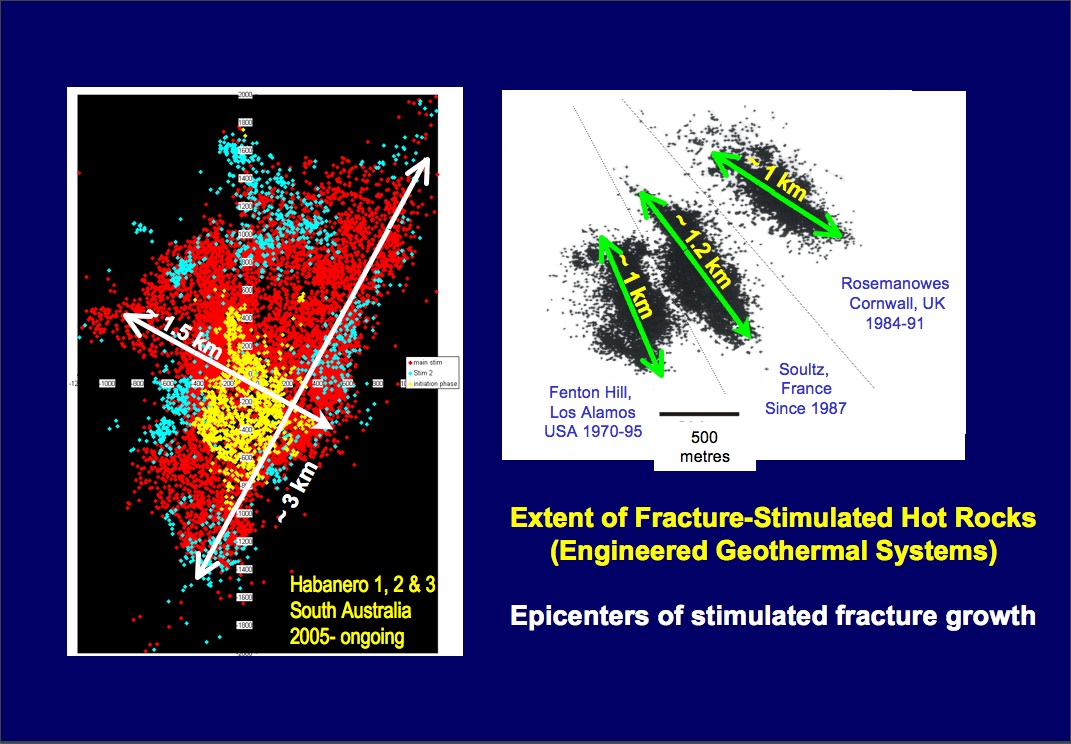![]() Click to view presentation in PDF format.
Click to view presentation in PDF format.
Hot Rocks Downunder - Geothermal Plays in Australia*
Barry A. Goldstein1, Anthony (Tony) J. Hill1, Anthony R. Budd2, Fiona Holgate2, and Michael Malavazos1
Search and Discovery Article #80015 (2008)
Posted October 24, 2008
*Adapted from oral presentation at AAPG Annual Convention, San Antonio, Texas, April 20-23, 2008
1 Petroleum & Geothermal Group, Primary Industries & Resources South Australia, Adelaide, SA, Australia ([email protected])
2 Onshore Energy & Minerals Division, Geoscience Australia, Canberra, ACT, Australia
Abstract
Australia's hot rock and hydrothermal resources have the potential to fuel competitively-priced, emission-free, renewable baseload power for centuries to come. This potential and the risks posed by climate change are stimulating geothermal energy exploration projects in Australia.
Extracting just 1 percent of the geothermal between the depth to 150°C and 5,000m would yield ~190 million PJ or about 26,000 times Australia's primary power usage in 2005, and that does not take into account the renewable characteristics of hot rock Enhanced Geothermal Systems (EGS) or the resource below 5,000m.
Twenty-nine companies have joined the hunt for geothermal energy resources in 204 licence application areas covering approximately 187,000 km2 in Australia. Most exploration efforts are currently focused on hot rocks (EGS) to fuel binary power plants. Roughly 80 percent of these projects are located in South Australia.
A considerable investment (US$170+ million) is required to prove a hot rock play, and demonstrate the reliability, scalability, and efficiency of EGS power production. The proof-of-concept phase entails the drilling of at least two deep (>3,500m) hot holes (one producer and one injector) as well as fracture stimulation, geo-fluid flow and reinjection and heat exchange to generate electricity. Up-scaling for compelling demonstration projects entails additional wells and smooth operations from a binary geothermal power plant.
Play and portfolio assessment methods currently used to manage the uncertainties in petroleum exploration can usefully be adapted to underpin decision-making by companies and governments seeking to push and pull hot rock energy supplies into markets.
The presentation will cover the geology, challenges, and promising future for hot-rock geothermal energy projects in Australia.
Selected Figures
Do You Believe:
- Existing technologies enable drilling and completions to >200°C in most of the world?
- Emissions cap and trading will add to the cost of emissive power generation and makelow emission technologies attractive?
- If so - imagine the vast opportunities to tap amagmatic HOT ROCKS as a secure source of 24/7 emissions-free electricity for centuries to come.
Hot Fractured Rock Demonstration Projects
Fenton Hill, Los Alamos, NM, USA: 1970 - 1995
Fjalbacka, Sweden: 1984 - 1988
Rosemanowes, Cornwall, UK : 1984 - 1991
Hijiori, Japan: 1985 - 2000
Soultz, France: 1987 - Current
Ogachi, Japan: 1989 - 2000
Habanero & Jolokia, Australia: Current
Bad Urach, Germany: Current
Basel, Switzerland: Abeyance/Current
Landau, Germany: Current
Milestones Ahead on the Road to the Vision - Commercialized Geothermal Energy
- Several successful research (exploration) and proof-of-concept (heat energy is flowed) geothermal projects. At least 10 by 2011/12.
- Several geothermal power generation demonstration projects in distinctively different geologic settings. At least 3 by 2012.
- Compelling success with geothermal power generation demonstration so the investment community is convinced geothermal energy is real. By 2012.
- Safe, secure, reliable, competitively priced, renewable and emissions-free base load power from geothermal energy for centuries to come. At least 7% of base-load demand from hot rock power by 2030. More than 10% by 2050.


